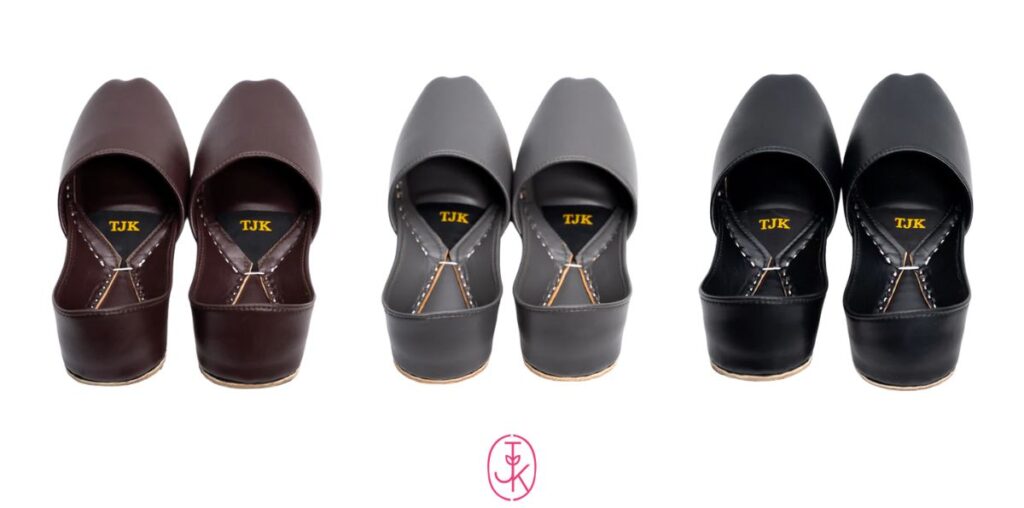Khussa shoes have been a part of South Asian culture for centuries. These traditional handcrafted shoes are known for their intricate designs, unique embroidery, and timeless appeal. While khussa shoes are often worn on special occasions, many parents wonder whether khussa for baby boy is suitable for everyday wear. With the growing trend of blending tradition with modern fashion, baby khussa has evolved in terms of comfort, materials, and design.
Parents want the best for their little ones, and footwear plays a crucial role in ensuring proper foot development. Babies have delicate and growing feet that require shoes that are comfortable, breathable, and flexible. So, is khussa for baby boy a good choice for daily use? Let’s explore the benefits, potential drawbacks, and factors to consider before making a decision.
The Unique Appeal of Baby Khussa
Baby khussa stands out from other types of footwear due to its unique craftsmanship and traditional elegance. These shoes are handmade by skilled artisans, often using leather, fabric, or suede, and feature intricate embroidery and embellishments. This cultural significance makes them a preferred choice for festive occasions, but recent advancements in khussa design have made them more practical for daily wear.
Unlike modern baby shoes, which are often made of synthetic materials, baby khussa is crafted from natural fabrics and leather, making them more breathable. Their soft interiors and flexible soles provide a level of comfort that is essential for babies who are still developing their walking skills.
The Comfort Factor in Everyday Wear
Comfort is a top priority when choosing footwear for a baby. Since babies have soft and sensitive feet, shoes should allow natural movement and not restrict growth. Traditional khussas were often made with stiff soles, but modern baby khussa is designed to be softer and more flexible.
Soft and Breathable Materials: One of the most important aspects of baby khussa is the material used. Leather and cotton fabric are commonly used to create breathable khussas that prevent sweating and irritation. This makes them suitable for extended wear, ensuring that a baby’s feet remain dry and comfortable throughout the day.
Flexible Soles for Natural Movement: Babies need shoes with flexible soles to support their natural foot movement. Modern khussa for baby boy now comes with soft and cushioned soles, allowing babies to walk comfortably without any stiffness. This flexibility ensures that the feet develop properly without any pressure points.
Lightweight and Easy to Wear: A good everyday shoe should be lightweight so that it doesn’t burden the baby’s feet. Traditional khussa designs were often heavy due to embellishments, but newer versions are designed to be lighter, making them ideal for everyday use. Additionally, baby khussa is easy to slip on and off, which is convenient for both parents and babies.
Durability of Baby Khussa for Everyday Use
Another important consideration when choosing shoes for daily wear is durability. Since babies are always on the move, their footwear must withstand constant use.
Handmade khussas are known for their durability, as they are crafted with high-quality materials and detailed stitching. However, the longevity of baby khussa depends on the materials used and the frequency of wear. If parents choose a pair with sturdy stitching and reinforced soles, khussas can last for a long time even with regular use.
While khussas are traditionally made of leather, some modern versions feature soft rubber soles that add an extra layer of durability and grip. These variations help prevent slipping and make them more practical for babies who are learning to walk.
Are Khussa Shoes Safe for Everyday Wear?
Safety is a primary concern for parents when selecting footwear for their babies. The right shoes should provide a secure grip, proper support, and a comfortable fit.
Non-Slip Soles for Better Grip: Traditional khussas often have smooth leather soles, which may not provide the best grip on slippery surfaces. However, many baby khussa options now come with rubberized or textured soles that enhance grip and prevent slipping. This makes them a safer choice for babies who are crawling or taking their first steps.
Snug but Comfortable Fit: Properly fitting shoes are essential for a baby’s foot health. Shoes that are too tight can cause discomfort, while loose-fitting ones can lead to tripping. Baby khussa often comes with elastic bands or soft closures that help secure the shoe on the baby’s feet without being too tight. Parents should always ensure that there is enough room for the baby’s toes to move freely.
No Harsh Chemicals or Synthetic Materials: Unlike many modern baby shoes that contain synthetic materials or chemicals, khussa shoes are often made from natural materials. This reduces the risk of allergic reactions or skin irritation, making them a safe choice for babies with sensitive skin.
Style and Versatility of Baby Khussa
Khussa shoes are not just about comfort; they are also incredibly stylish. Their traditional designs make them an elegant choice for different occasions, but they are also versatile enough for casual wear.
Perfect for Traditional and Casual Outfits: One of the best things about khussa for baby boy is that it pairs well with both ethnic and casual outfits. Whether the baby is wearing a kurta pajama for a special occasion or a simple onesie for a day out, khussas add a touch of elegance to their look.
Available in Various Colors and Designs: Baby khussa is available in a wide range of colors, patterns, and designs. Parents can choose from embroidered, beaded, or plain designs, depending on their preference. Some khussas even feature cartoon characters or modern prints, making them more appealing for daily wear.
Customizable Options: Many artisans offer customized khussas, allowing parents to select designs that match their baby’s personality or outfit. This personalization adds a unique touch to everyday wear while maintaining comfort and practicality.
Potential Drawbacks of Wearing Khussa Daily
While baby khussa has many benefits, there are a few drawbacks to consider before using them as everyday footwear.
May Require Occasional Break-In Period: Some khussas, especially those made of leather, may require a short break-in period before they become fully comfortable. Parents should ensure that the shoes are soft enough before making them a part of their baby’s daily wardrobe.
Not Ideal for Harsh Weather Conditions: Khussas are great for moderate weather, but they may not be the best option for rainy or extremely cold days. Leather and fabric khussas may not provide enough protection against moisture, so parents should have alternative footwear for wet conditions.
Limited Arch Support: While khussas are designed to be soft and flexible, they may not offer the same level of arch support as some orthopedic baby shoes. If a baby has specific foot health concerns, parents should consult a pediatrician before using khussa for extended daily wear.
Conclusion
Khussa for baby boy is an excellent choice for everyday wear, provided that parents choose the right pair. With modern improvements in materials, soles, and designs, baby khussa has become more comfortable, durable, and safe for daily use. These shoes offer a unique combination of traditional craftsmanship and contemporary comfort, making them a stylish and practical footwear option.
By selecting khussa shoes with soft soles, breathable materials, and a secure fit, parents can ensure that their baby’s feet remain comfortable throughout the day. Whether worn for cultural significance or as a fashion statement, baby khussa continues to be a timeless choice that blends heritage with modern convenience.


